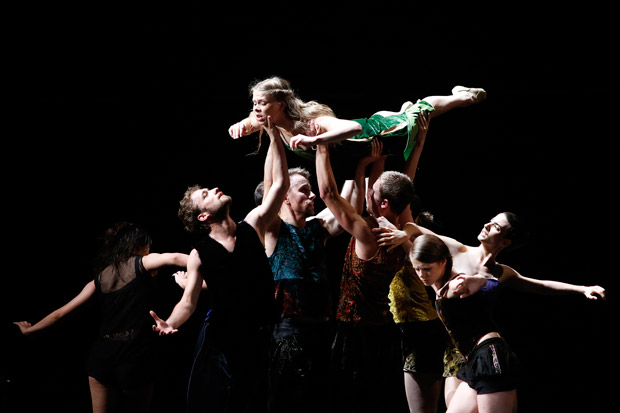
© K Mystkowski. (Click image for larger version)
Baltic Dance Theatre
Death and the Maiden / Tristan and Izolde
★★★✰✰
Gdansk, Baltic Opera House
28 June 2016
www.baltyckiteatrtanca.pl
Interview with Izadora Weiss, choreographer of Tristan and Izolde
Not quite the end of an era, more the end of a beginning. This closing of Baltic Dance Theatre’s 2015/16 season also marked the effective separation of the company from its home base at the Baltic Opera House. It’s an enforced break, necessitated by the surprise appointment of the conductor, Warcisław Kunc – formerly the artistic director at the Grand Theatre in Łodź – as the Opera House’s new director, from 1 September. Kunc has already declared his intention to bring back classical ballet to Gdańsk and will oversee the formation of a new ballet company from scratch, during the autumn. Rumour has it that a new artistic director has been selected; but he or she has not yet been named.
It does not, however, signify the end of BDT, now rightly recognised as one of Poland’s leading contemporary dance ensembles. The company is likely to remain at the Opera House until at least November, as it prepares for performances at the Diaghilev Festival in St Petersburg; and the management is currently holding discussions with ministries and theatres, both in Pomerania and elsewhere in Poland, regarding a future home. Watch this space.
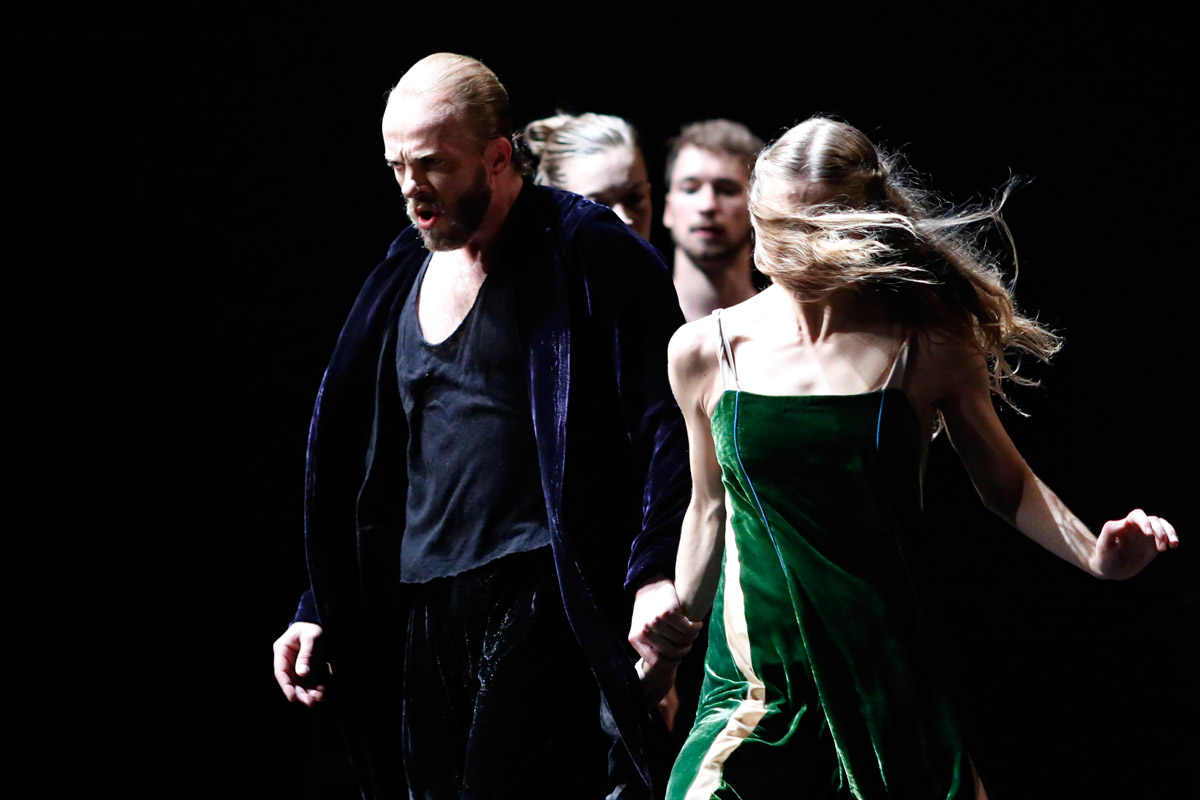
© K Mystkowski. (Click image for larger version)
I have long admired the choreography of Izadora Weiss and have been a regular and eager visitor to Poland to consume new additions in her prolific output. Whilst the ejection of her company from the Baltic Opera House appears absurdly short-sighted, not the least because of the loyal following BDT has gathered over the past six years, the future will offer up new opportunities since ending the ties to an Opera House will inevitably provide more freedom to tour and be seen outside its hitherto host city. Prior to taking up the helm at the Baltic Dance Theatre, Weiss was a busy, itinerant, freelance choreographer, and she is now again able to take on important commissions elsewhere, beginning with a new full-length work – Joseph Conrad’s Heart of Darkness – for the Polish National Ballet, in 2017.
Tristan & Izolde is therefore Weiss’s last new work to premiere at the Baltic Opera House and it was both stylistically reminiscent of her recent output but, paradoxically, a significant departure into new territory. Her choreography is firmly rooted in narrative and music and both influences are again paramount.
Wagner’s eponymous opera provides the characters and sketches the storyline upon which Weiss has stamped her own emphatic mark. But, there is not a bar of Wagner’s score to be heard. Instead, Weiss has courageously opted for making her own soundtrack from the prodigious output of Krzysztof Penderecki, augmented by the contemporary variations thereon, created by Radiohead’s Jonny Greenwood in association with Penderecki in their 2012 collaboration entitled 48 Responses to Polymorphia.
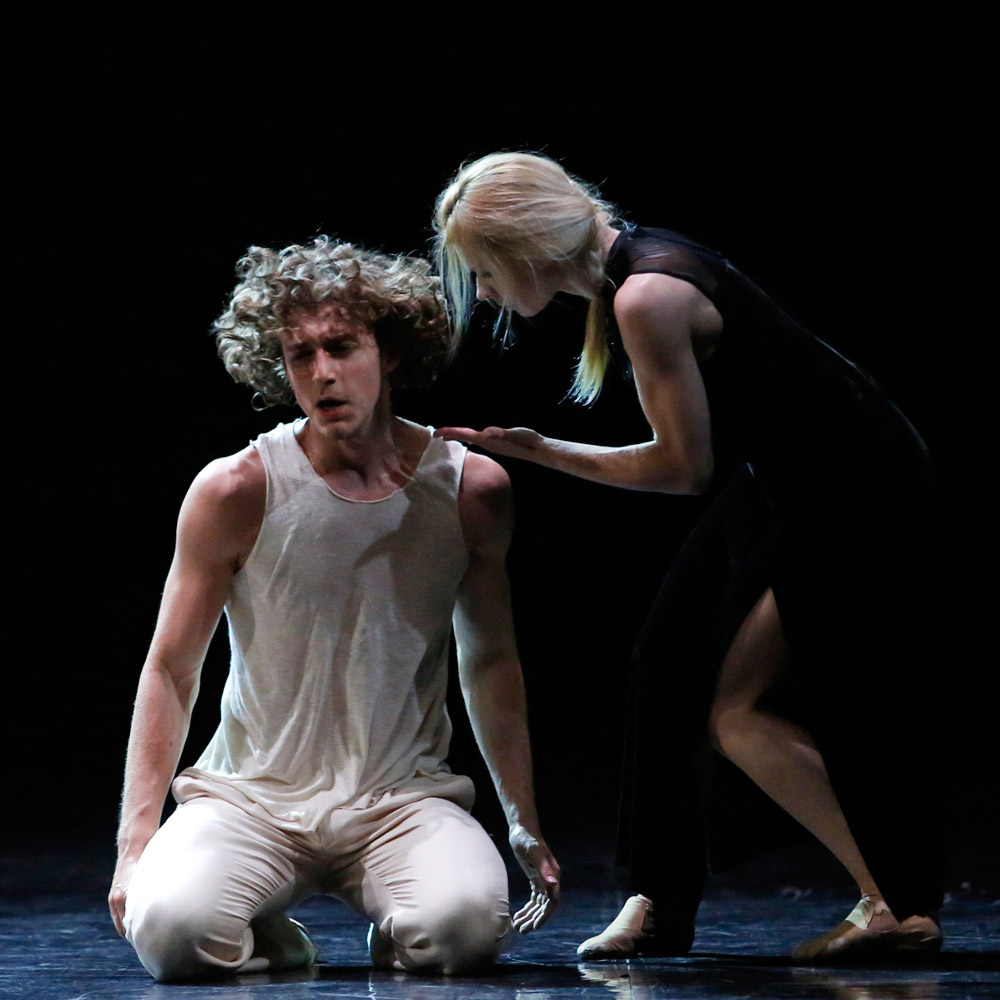
© K Mystkowski. (Click image for larger version)
Penderecki – now 83, and unquestionably Poland’s most eminent living composer – was present for this performance and, afterwards, told me that it often seemed as if he was listening to his music for the first time! And, in many ways, Weiss has created a fascinating “new” score, pulled together from extracts of the rich diversity of Penderecki’s compositions, to present a musically challenging soundtrack to yet another tragic tale of obsessive love. The music is extraordinary, veering from luscious, hummable romantic themes to get lost in, to the dissonant complexity of polymorphic sound and the unmistakeable Radiohead influences in two particular scenes.
Hanna Szymczak’s costumes continue the colourful, casual, modernist designs that were evident in The Tempest and Phaedre (Weiss’s previous works) and the black set panels manoeuvred into place by the cast were also a direct repeat of the space-breaking devices used to great effect in The Tempest. Weiss also employs her familiar technique of gradually bringing dancers forward out of upstage darkness; and throughout the work, the varied lighting angles of her regular designer, Piotr Miszkiewicz play a crucial role. Visually, stylistically, even narratively, one might see Tristan & Izolde as the third part of a conjoined triptych, following Phaedre and The Tempest. They are very obviously the work of the same creative team.
What is different is the profound impact of Weiss’s choreography over this sixty-minute piece. Her movement is always busy and intensely musical but generally it is a means to an end, which is to serve the narrative purpose; here, the libretto seems always to play second fiddle to the dance. And, for the first time, I found myself enjoying a Weiss ballet without needing to follow the story.

© K Mystkowski. (Click image for larger version)
There are several stand-out dance sequences, which are emblematic of her work and could become iconic: such as when the BDT corps moves organically in unison; when a large group of performers slowly traverse – by a variety of means- a long line of chairs placed diagonally across the stage (a group movement device that oddly reminded me of the brothel scene in Kenneth MacMillan’s Manon) and three parallel duets, performed simultaneously in a “V” shape (one upstage centre and two downstage, right and left) with the action of each pair picking up on different nuances and influences in the music. Weiss has employed this “split-screen” choreographic technique before (in A Midsummer Night’s Dream and Light, for example) and it is a very particular skill that she has mastered to scintillating effect.
The narrative is extraordinarily complex to follow and I confess to giving up at times through the sheer weight of it all! Weiss appears to have mixed up the various folk tales that may have inspired Wagner’s opera (variously credited to Cornwall, Brittany, Ireland and Germany) such that we have characters that are not in Wagner’s epic and operatic roles that have hit her cutting-room floor. She introduces a pair of twin evil spirits to haunt the action (these sinister sisters were menacingly danced by Sayaka Haruna-Kondracka and Min Kyung Lee). The narrative is certainly confusing, at times, which is perhaps why the choreography has more impact for its own sake.
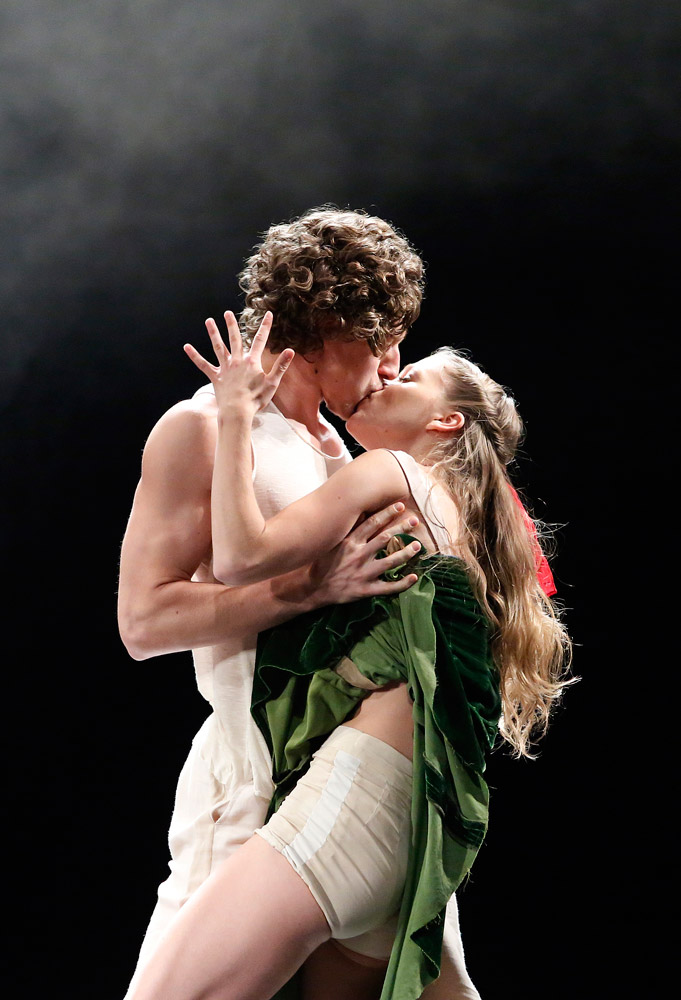
© K Mystkowski. (Click image for larger version)
The face of the company is also changing and the solo roles brought together a clutch of BDT stalwarts with several new dancers joining them in the limelight. Of the established dancers, Beniamin Citkowski provided a brooding handsome presence as Tristan (following on from his lead role as Hippolytus in Phaedre) and the charismatic Filip Michalak (Prospero in The Tempest) cut another authoritarian figure as King Mark. And, just as in the Tempest, Beata Giza provides an important cameo at the end of the production as the enigmatic Izolde of the White Hands (a potential wife for Tristan).
I was impressed by the new dancers, not least a quartet of them who have come from Norway, led by the expressive dance actress, Anita Suzanne Gregory (who has dual nationality, Norwegian and British) as Izolde, and Sune Leander Klausen as Gorvenal (Tristan’s servant). Another new dancer, Garazi Etxaburu, from the Basque country, also featured strongly as Brangien (Izolde’s maid). Given that the main romance is fuelled by a misdirected love potion, drunk by the unintended Tristan, instead of King Mark, it transpires that the love between Gorvenal and Brangien is the work’s only genuine affection.

© K Mystkowski. (Click image for larger version)
This premiere was front-ended by a reprisal of Death and the Maiden, made by Weiss – in 2013 – to the music of Schubert’s String Quartet No 14, a thematic testament to death composed at a time that Schubert knew he was dying. The early macho, strident group choreography for a cadre of men in army fatigues on what may appear to be a parade ground is from the same mould of “shouting movement” that typifies some of Hofesh Shechter’s most popular work.
Weiss’s conceit is to make death a maiden, chillingly performed here by Agnieszka Wojciechowska. She plays a one-sided match for the life of a soldier (Levente Bálint) with his sweetheart (an effective mix of coquettish innocence from Emma Jane Howley) leading to one of Weiss’s typically poignant tableau endings. Here, it aired with a new cast that maintained the high impact of previous performances seen by this writer, in both Warsaw and Gdańsk.
Misunderstandings that lead to tragedy; issues of social alienation; the dynamics of master-servant relationships, often defined by gender; and the course of true love running anything but smoothly are the dominant recurrent themes in the expressionist and musical work of Izadora Weiss. I haven’t encountered the work of any living choreographer that tackles the narrative exploration of such issues better. Until now, she and her company have been the best-kept secret in Poland but now, perhaps thanks to Mr Kunc, they are free to roam. Let us hope some enterprising producer gets them here to the UK. It’s long overdue.














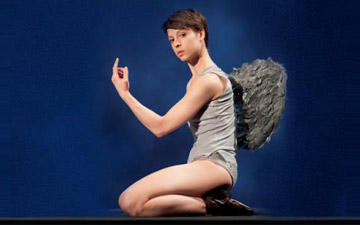


You must be logged in to post a comment.